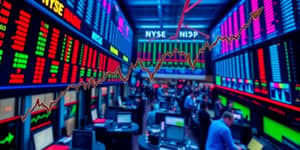
Quarterly index reviews often trigger pivotal shifts in sector allocations across exchange-traded funds (ETFs). Understanding these changes is crucial for investors seeking to optimize their portfolios and respond to market dynamics.
As the ETF industry expands and evolves, investors and advisors must navigate a landscape shaped by regulatory updates, methodological tweaks, and shifting macro trends. This article examines the latest sector weight adjustments following quarterly reviews, explores the drivers behind these moves, and offers practical strategies to harness these insights.
The global ETF market has experienced unprecedented growth over the past decade, with assets under management (AUM) projected to exceed USD 20 trillion by 2026, reflecting a compound annual growth rate of 17% from 2021 to 2026. In 2025 alone, ETF assets in Australia are expected to surpass AU$300 billion, driven by both passive and active strategies.
Active ETFs are reshaping the industry: more than 50% of new launches in 2025 are anticipated to be actively managed products. BlackRock estimates that global active ETF AUM will soar to USD 4 trillion by 2030, a fourfold increase from current levels. This surge underscores investors’ demand for dynamic and tailored portfolio exposures rather than traditional passive tracking.
Quarterly sector rebalancing often reflects market leadership rotations and risk management concerns. In March 2025, State Street Global Advisors, collaborating with S&P Dow Jones Indices, modified the capping methodology for ten SPDR US sector ETFs. Clients had voiced worries over overconcentration, prompting adjustments that took effect on March 24, after weight calculations at the March 21 market close.
Sector flows mirrored these methodological changes. Technology ETFs, which had enjoyed substantial inflows in late 2024, experienced negative flows in February 2025. Investors redirected capital toward Banks and Financials, as well as Communication Services. Conversely, the Energy and Materials sectors saw continued outflows amid tariff tensions and a subdued crude oil outlook.
Quarterly weight adjustments are influenced by broader economic and policy factors. Rising interest rates, inflation dynamics, and geopolitical headlines—particularly tariff negotiations—can affect sector performance and investor sentiment.
Regulatory frameworks, especially SEC rules governing ETFs’ ties to net asset value (NAV), ensure market stability and transparency. These rules safeguard against undue deviations between market price and NAV, maintaining investor confidence in both secondary market trading and creation/redemption processes.
The ETF industry is evolving beyond traditional passive indexing. Model portfolios now blend passive sector funds with actively managed strategies to seek outperformance. Thematic ETFs—covering areas such as clean energy, cybersecurity, and digital assets—have proliferated, offering investors alpha-seeking vehicles with targeted exposure.
Crypto ETFs are emerging in jurisdictions with supportive regulation, while roboadvisors increasingly deploy all-ETF portfolios to automate diversification and rebalancing. Major providers like BlackRock, Vanguard, and State Street are now innovating product lineups to include both low-cost passive funds and specialized active offerings.
International ETFs play an essential role in mitigating home-country bias and capturing growth in non-US markets. Vanguard’s Total International Stock ETF (VXUS) exemplifies disciplined diversification—no single holding exceeds 2% of the portfolio, ensuring no single company dominates the fund.
As we move into the next quarterly review cycle, investors should watch for continued rotation into Financials and Communication Services if interest rates remain firm. Emerging themes such as renewable energy, artificial intelligence, and healthcare innovation are poised for growth, supported by policy incentives and demographic trends.
Periods of high sector dispersion create tactical opportunities. Strategic rebalancing—anchored by robust asset allocation frameworks—can help capture upside while managing risk. By staying informed on index methodology changes and macro drivers, investors can align their ETF portfolios with evolving market dynamics.
In an industry projected to exceed USD 20 trillion in AUM by 2026, mastering the nuances of quarterly sector reviews and product innovation is essential. Whether through active strategies, thematic bets, or international diversification, ETFs offer versatile building blocks for constructing resilient, high-conviction portfolios in today’s complex markets.
References













